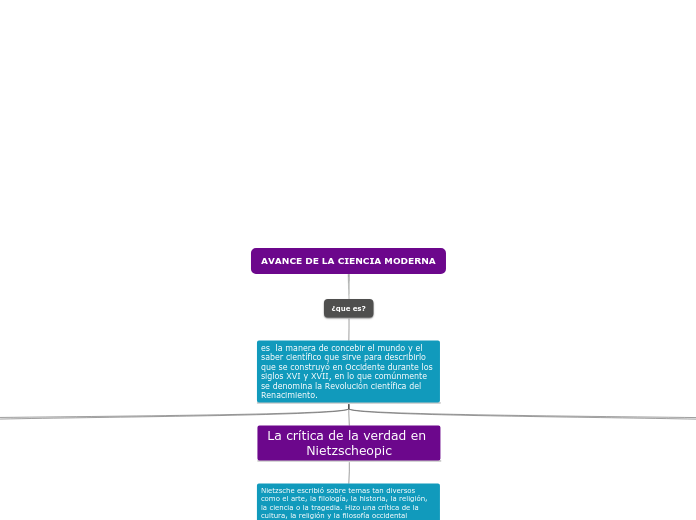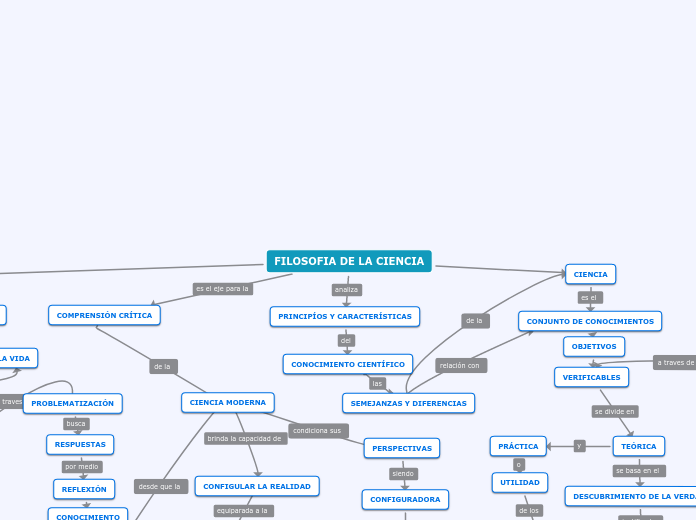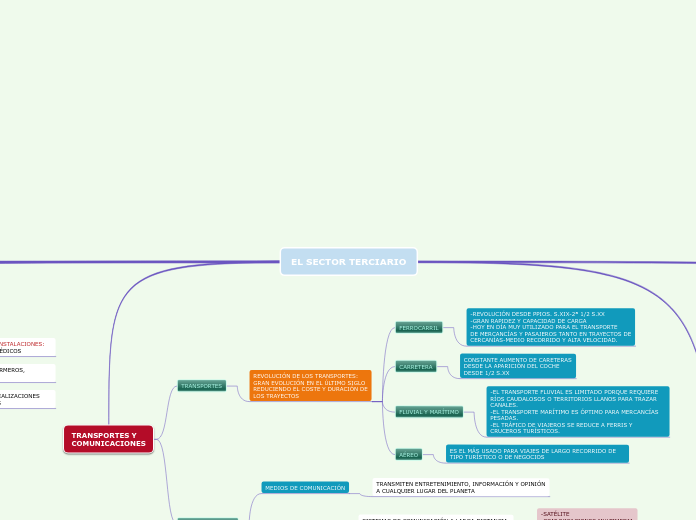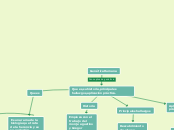AVANCE DE LA CIENCIA MODERNA
Type in the name of the multiple-perspectives text.
Example: Bridge to Terabithia by Katherine Paterson
¿que es?
es la manera de concebir el mundo y el saber científico que sirve para describirlo que se construyó en Occidente durante los siglos XVI y XVII, en lo que comúnmente se denomina la Revolución científica del Renacimiento.
Identify an important issue from the text that is being presented from different angles. Type it in.
Example: Jesse's drawing talent.
Nacimiento y desarrollo de las ciencias humanas
Decide on the fourth point of view
Type in the name of the last character whose perspective on the issue you are going to present.
Example: Leslie Burke, Jesse's new next-door neighbor, and best friend.
La historia de las ciencias humanas asienta en una antigüedad primigenia por principio fundada en saberes profundos pero indiferenciados cuya referencia indiscutible se encuentra en Pitágoras.
Point of view
Type in a relevant quote that highlights the character's point of view. Try to follow a citation format: author's name, chapter, and page.
Example: I can't get the poetry of the trees,' he said. She nodded. Don't worry,' she said. You will someday. He believed her.' (Paterson, 4. 24)
La revolución biológica
Whose character does the third point of view belong to?
Type in his/her name.
Example: Mr. Aarons, Jesse's father.
La evolución biológica es el conjunto de cambios en caracteres fenotípicos y genéticos de poblaciones biológicas a través de generaciones. Dicho proceso ha originado la diversidad de formas de vida que existen sobre la Tierra a partir de un antepasado común.
What does the character think, say or do that suggests their perspective on the issue?
Type in a quote and try to maintain the citation format.
Example: 'He would like to show his drawings to his dad, but he didn't dare. (...) He'd thought his dad would be pleased. He wasn't. What are they teaching in that damn school? he had asked.' (Paterson, 2.8)
La crítica de la verdad en Nietzscheopic
Nietzsche escribió sobre temas tan diversos como el arte, la filología, la historia, la religión, la ciencia o la tragedia. Hizo una crítica de la cultura, la religión y la filosofía occidental mediante la genealogía de los conceptos que las integran, basada en el análisis de las actitudes morales (positivas y negativas) hacia la vida.
Crítica de la noción tradicional de verdad en La Gaya Ciencia
En el paso que da Nietzsche en La gaya ciencia se acentúan los que serán los caracteres
básicos de su crítica al concepto de verdad tradicional: el conocimiento se basa en
«errores», en la posición arbitraria de ciertos supuestos ontológicos fundamentales que permiten el dominio del ente y de este modo son útiles para la vida
Crítica del idealismo en Humano, demasiado humano
En Humano, demasiado humano la religión, la metafísica y el arte son condenados; no
se los considera ya como los modos fundamentales de la verdad, sino que aparecen
como una ilusión que hay que destruir
Persectivismo
En la Gaya Ciencia, texto de 1882, las formulaciones de Verdad y mentira son
superadas (o enriquecidas) por un nuevo criticismo perspectivista
Verdad y lenguaje
El vínculo lenguaje y verdad es un tema en el que la filosofía nietzscheana repara
constantemente debido a que encuentra allí uno de esos nexos típicos de la metafísica,
El positivismo y el neopositivismo
Decide on the second point of view
Name the character (it can either be the main character or one of the supporting characters) whose point of view you are presenting.
Example: Miss Edmunds, Jesse's music teacher.
El empirismo lógico, también llamado neopositivismo, positivismo lógico o empirismo racional, es una corriente en la filosofía de la ciencia que limita la validez del método científico a lo empírico y verificable
Type in a quote that points out the character's position about the issue.
Try to follow a citation format: author's name, chapter, and page.
Example: 'She said he was unusually talented, and she hoped he wouldn't let anything discourage him.' (Paterson, 2. 8)
La visión científica de la Ilustración
Decide on the first point of view you are going to present.
Type in the name of the character (it can either be the main character or one of the supporting characters) whose point of view belongs to.
Example: Jesse Oliver Aarons, Jr., the main character of the novel, a fifth-grader living in a rural Southern area.
de la Ilustración se centraban en torno a la naturaleza humana y a la sociedad apoyándose en la razón para conseguir su emancipación definitiva. A medida que se afianzó el progreso científico, adquirió mayor fuerza el cientificismo que considera a la ciencia como el único conocimiento válido o como modelo de todo conocimiento.
Type in a relevant quote that highlights the character's point of view towards
es la manera de concebir el mundo y el saber científico que sirve para describirlo que se construyó en Occidente durante los siglos XVI y XVII, en lo que comúnmente se denomina la Revolución científica del Renacimiento..
Try following a citation format: author's name, chapter, and page.
Example: 'Jesse drew the way some people drank whiskey. (...) Lord, he loved to draw. (...) When he was in first grade, he told his father that he wanted to be an artist when he grew up.' (Paterson, 2. 7)









